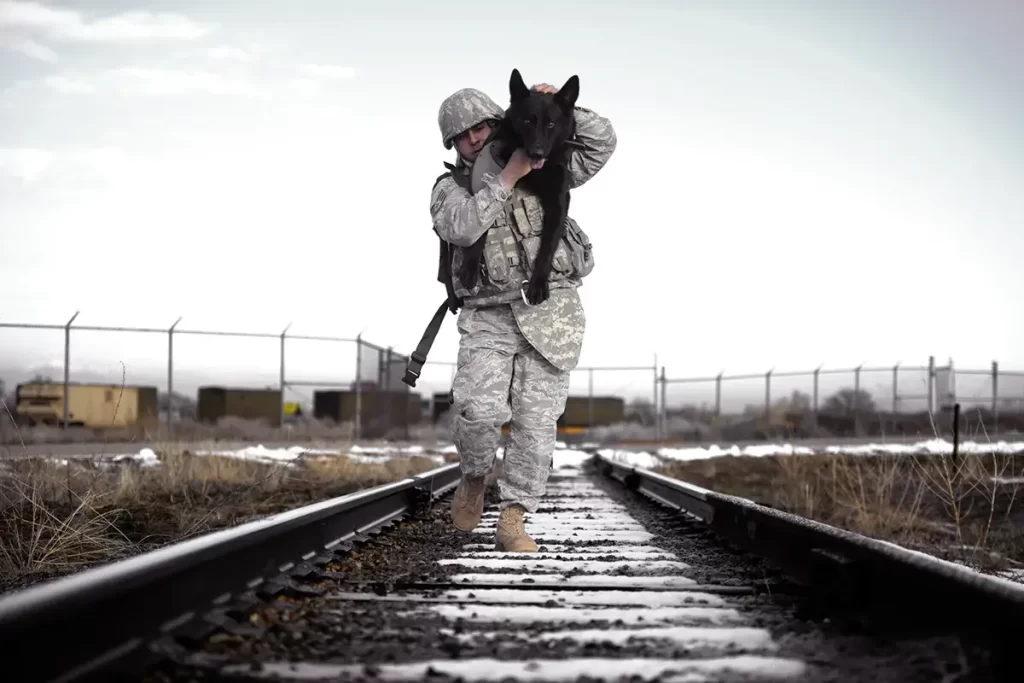Do you struggle with post-traumatic stress disorder?
It’s natural to feel afraid after a traumatic situation. Fear helps us avoid or respond to danger.
Unfortunately, PTSD can make things worse for some people.
What Is PTSD?
Post-traumatic stress disorder (PTSD) is a psychiatric disorder that may occur in people who have experienced or witnessed a traumatic event.
An individual may experience this emotionally or it may be physically harmful causing lasting negative effects on an individual’s mental, physical, social, and/or spiritual well-being.
Examples include natural disasters, serious accidents, terrorist acts, war/combat, assault, historical trauma, violence, and bullying.
The Symptoms of PTSD
- Unwanted, distressing memories of a traumatic event that keeping coming back.
- Reliving a traumatic event as if it were happening again, also known as flashbacks.
- Upsetting dreams or nightmares about a traumatic event.
- Staying away from places, activities, or people that remind you of a traumatic event.
- Negative thoughts about yourself, other people, or the world.
- Ongoing negative emotions of fear, blame, guilt, anger, or shame.
- Feeling detached from family and friends.
- Not being interested in activities you once enjoyed.
- Having a hard time feeling positive emotions.
- Being easily startled or frightened.
- Always being on guard for danger.
- Trouble sleeping.
How You Can Manage PTSD
1. Know your triggers: Some people find things especially difficult on significant dates, such as the anniversary of a traumatic experience. It can help to plan for these times.
2. Focus on your breathing: When you get anxious, you might stop breathing normally which increases your feelings of fear and panic. Focus on taking deep breaths to manage your anxiety.
3. Remind yourself that you are safe: It may help to tell yourself that the trauma is over, and you are not in danger. Spending some time with a loved one can help you to feel safe. Talking about your feelings can also help you to feel better.
4. Practice Grounding: Grounding techniques for PTSD are methods used to bring a person back to the present moment during a traumatic flashback or anxiety episode. You can do this by focusing on your immediate surroundings and using your sensory experiences sight, sound, touch, smell, and taste, to feel safe in the present.
5. Seek treatment: The faster PTSD is treated, the easier it is to overcome. If you’re reluctant to seek help, keep in mind that PTSD is not a sign of weakness. The way to overcome PTSD is to confront what happened and learn to accept it as a part of your past. This process is much easier to deal with by talking to an experienced therapist or doctor.
6. Adopt a healthy lifestyle: It’s important to take care of yourself and develop some healthy lifestyle habits. Avoid alcohol and drugs. When you’re struggling with difficult emotions and traumatic memories, you may be tempted to self-medicate with alcohol or drugs. Substance abuse worsens symptoms of PTSD and can interfere with treatment.
7. Keep moving: When you’re suffering from PTSD, exercise can do more than improve your mood and outlook. Exercise can help your nervous system become “unstuck” and you can begin to move out of the immobilization stress response you may experience.
8. Find activities you enjoy: Engaging in creative activities such as art, music, or writing can be a therapeutic way to express and process your emotions. Creative outlets provide a healthy way to channel your feelings and can be a source of comfort and distraction from distressing thoughts. You will also increase your self-confidence.
9. Try journaling: Writing down your feelings can be a useful coping skill for PTSD. It can help people express and process their thoughts and feelings, which can be a good way of coping with anxiety and fear. Journaling provides a safe place for random thoughts, feelings, and experiences that would otherwise clutter your mind. Putting words down on paper helps your mind to become calmer.
10. Find a local support group: It is important to join a local support group so you can get advice from others who are in the same boat. Many people who struggle with PTSD will be better able to relate to those who may have similar experiences and insights.
11. Consider group therapy: Group therapy can be a valuable tool in treating PTSD, offering a safe space for individuals to share their experiences, learn coping skills, and connect with others who have similar trauma histories.
12. Dealing with bad dreams: If you wake up from a nightmare, remind yourself that you are reacting to a dream. Having the dream is why you are in a panic, not because there is a real danger. You may want to get out of bed and regroup. You can also engage in a pleasant, calming activity.
How To Help a Loved One With PTSD
If you know someone who may be experiencing PTSD, the most important thing you can do is to help that person get treatment. In the meantime, you can:
• Offer emotional support, understanding, patience, and encouragement.
• Learn about PTSD so you can understand what the person is experiencing.
• Don’t feel that you need to solve your loved one’s problems or come up with solutions.
• Share positive distractions, such as walks, outings, and other activities
• Help them build their confidence and sense of control.
• Creating routines and schedules can restore a sense of stability and security.
• Learn what triggers their PTSD and understand how you can help them cope.
• Create a safe space for your loved one at home where they can relax on their own.
• Address any concerns that the person may have about getting treatment.
• Encourage contact with family and close friends.
• Spend time with your loved one in ordinary day-to-day activities.
If a loved one has post-traumatic stress disorder, it can take a heavy toll on your relationship and family life. It can be hard to understand why your loved one won’t talk to you. The key is to get the person the proper help he or she needs to manage their PTSD.
Like What You Read? Get Stan’s Book!
Stan’s book has been featured in the news. His book will give you many options in managing your mental health. This will save you time and money and will increase your chances of finding the answers to your mental health issues.



